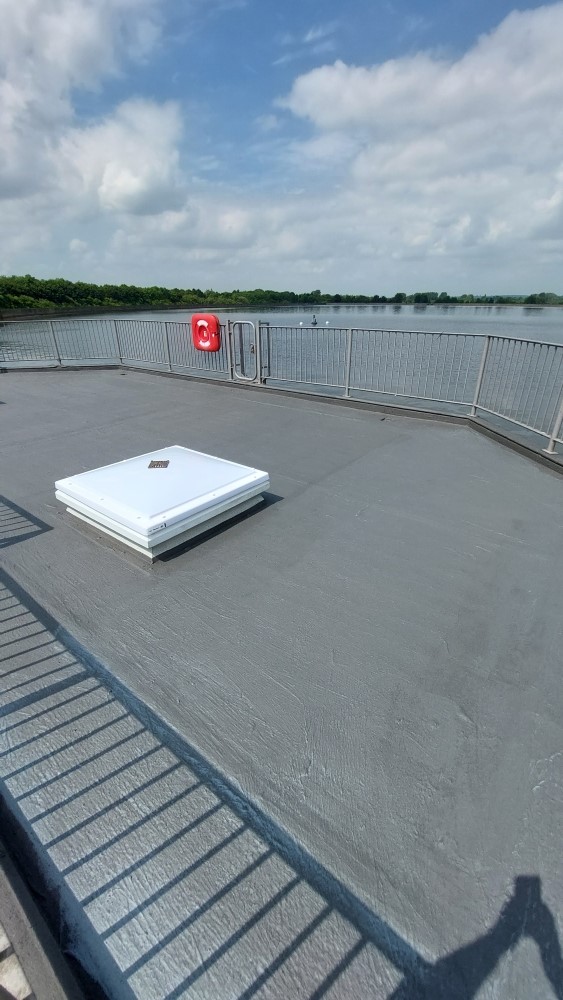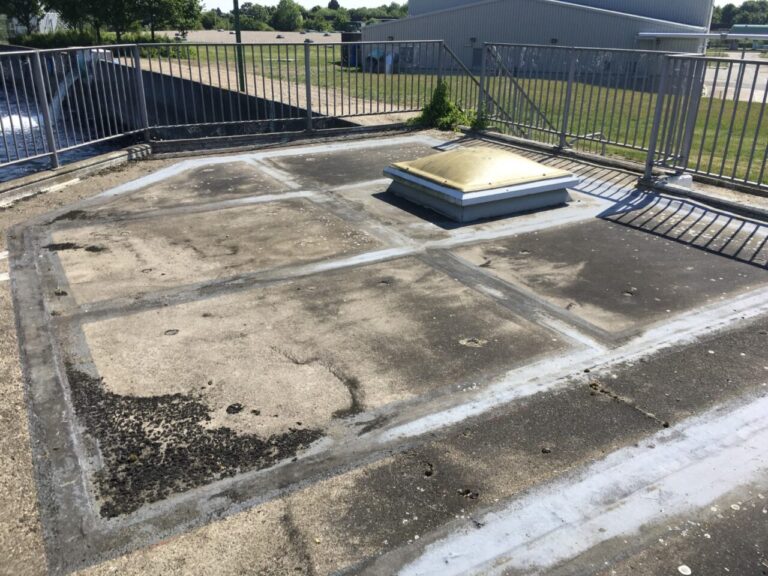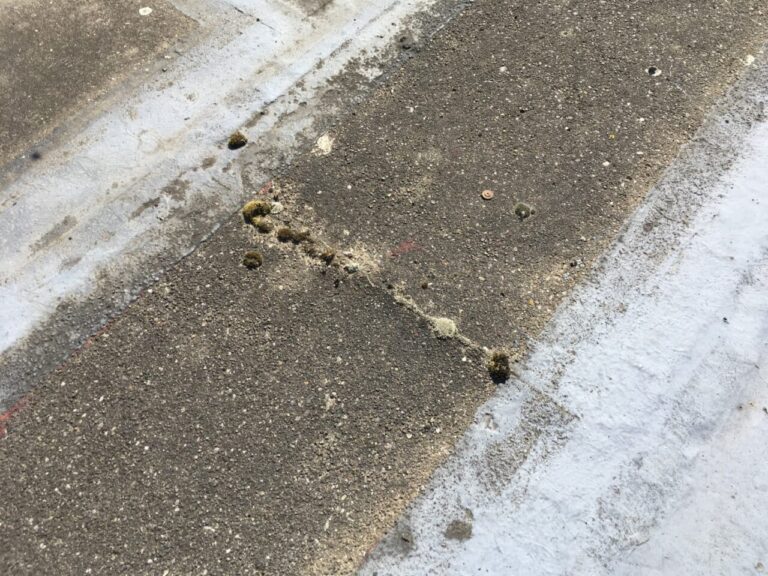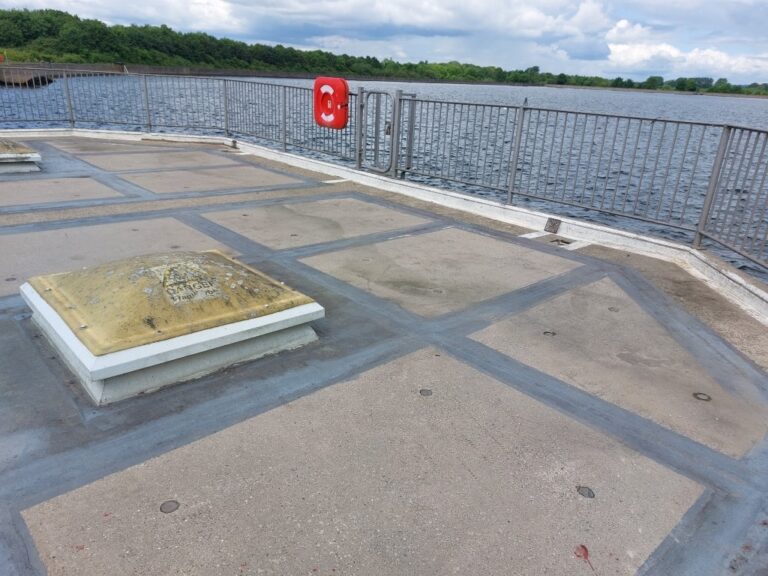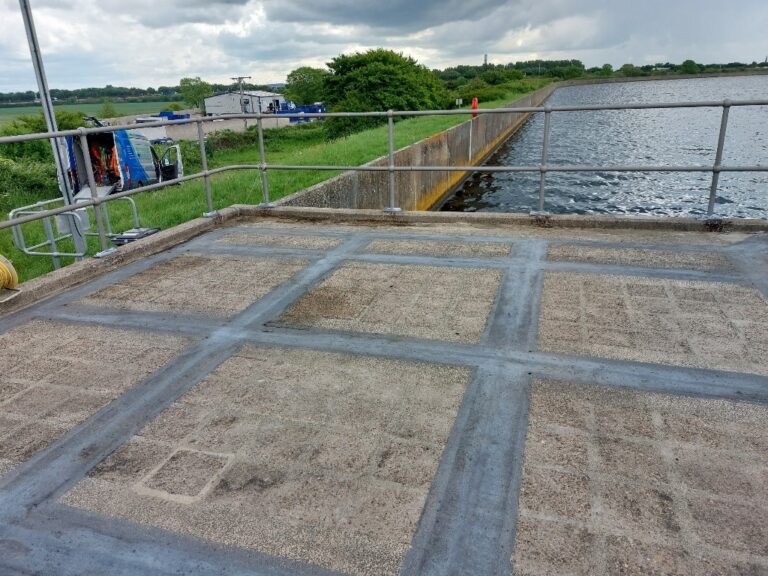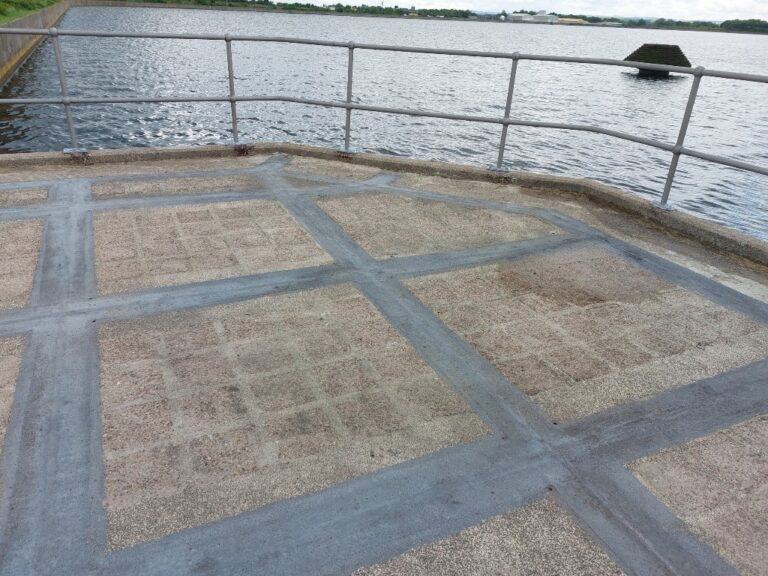THE PROBLEM
The inlet and outlet towers roofs were allowing water ingress into the valve rooms below. Previous attempts to solve the issue had resulted in a bandage system being applied to areas of the roof.
We were invited to site to quote for the replacement of this bandage, however during our suite survey we identified other areas of cracking and degradation outside of the bandage areas.
Also we observed that the previous bandage application was very well adhered and would required significant effort to remove.
SOLUTION
We proposed to the client that a more effective use of their capital would be to leave the well adhered bandage system in place thus making savings on preparation costs which could then be reallocated to the treatment of the entire roofs, thus incorporating other cracks and potential points of water ingress.
Initially all surfaces were prepared by method of pressure washing to remove contamination and surface laitance. The existing bandages were abraded to raise a surface profile for the new waterproofing membrane to adhere to.
Treating surfaces with Remmers Kiesol
All concrete surfaces were treated using Remmers Kiesol Diluted 1:1 with water and applied using a low pressure garden sprayer.
The previously bandaged areas received an initial application of Remmers MB2K reinforced with bandage for additional strength.
Remmers MB2K was then applied to the entire roofs in three coats inline with the manufacturers recommendations. The final coat was lightly brush finished to create a textured surface more conducive to traction underfoot.
Remmers MB2K was particularly suited to this application as it can crack bridge greater than 3mm without reinforcement, meaning that even in areas where bandage was not deemed necessary at the time of application good resistance to future movement and cracking would be provided.

